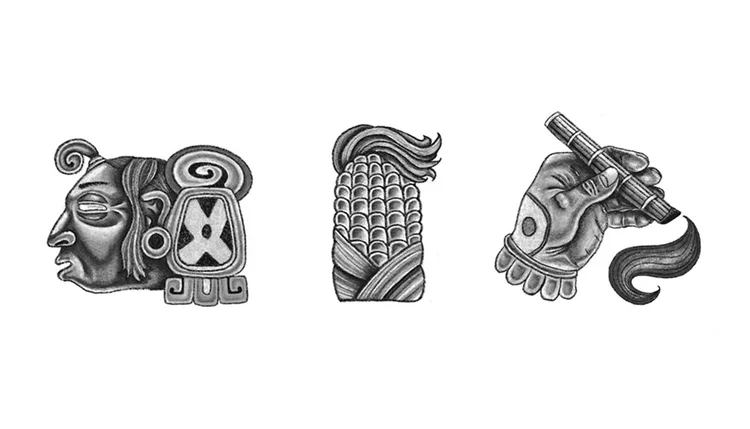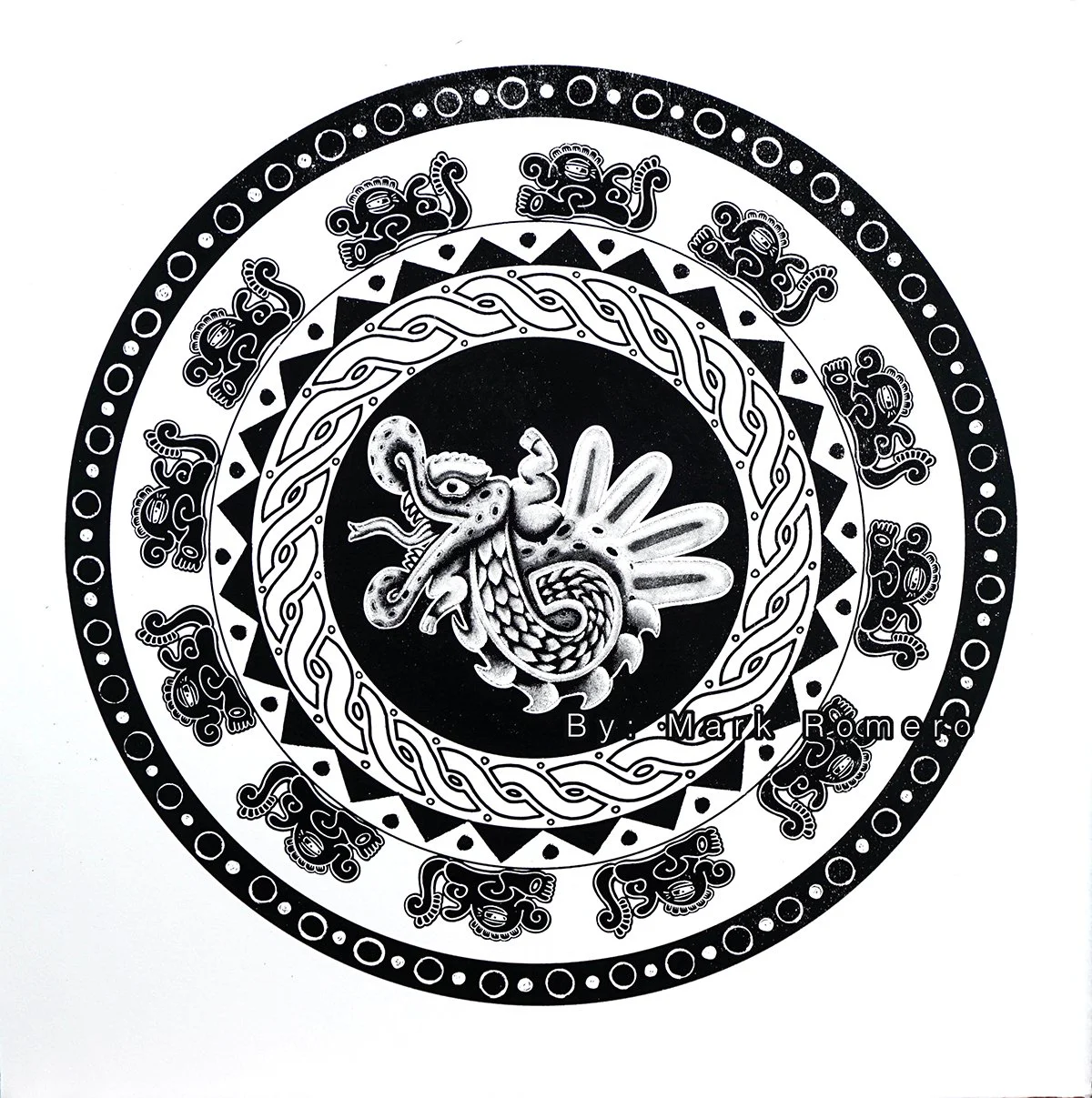Quetzalcoatl Nicaragüense - 20” W x 20” H, Screenprint on Paper
Mesoamerican cultures shared many religious and mythological concepts, including the feathered serpent, Quetzalcoatl. This deity was often associated with wind, rain, knowledge, fertility, and the planet Venus. While the core idea of a feathered serpent remained consistent, its specific attributes and stories varied across different cultures and regions.
The Nicarao people of Nicaragua were Nahua speakers, meaning they were related to the Nahuatl-speaking groups of central Mexico, including the Aztecs. This linguistic and cultural connection suggests that they likely shared many religious beliefs with their central Mexican relatives, including the veneration of a feathered serpent deity. In Nicaragua, indigenous groups like the Nicarao and Chorotega likely had their own versions of this deity, with unique names and characteristics. Detailed information about specific Nicaraguan names for the feathered serpent is limited due to the impact of colonization and the loss of indigenous knowledge, however, it could have been: Tamagastad.
Like other Mesoamerican cultures, Nicaraguan societies likely connected the feathered serpent to natural phenomena like volcanoes, rain, and the cycles of agriculture. This deity may have been seen as a powerful force that influenced both the natural world and human affairs.
Image from book: POTTERY OF COSTA RICA AND NICARAGUA BY SAMUEL KIRKLAND LOTHROP
GREGORIO BRACAMONTE, FIGURAL POTTERY, Compote or bowl with 3 animal form creatures acting as legs. Nicaragua
Photo cred: Museo Nacional de Nicaragua




